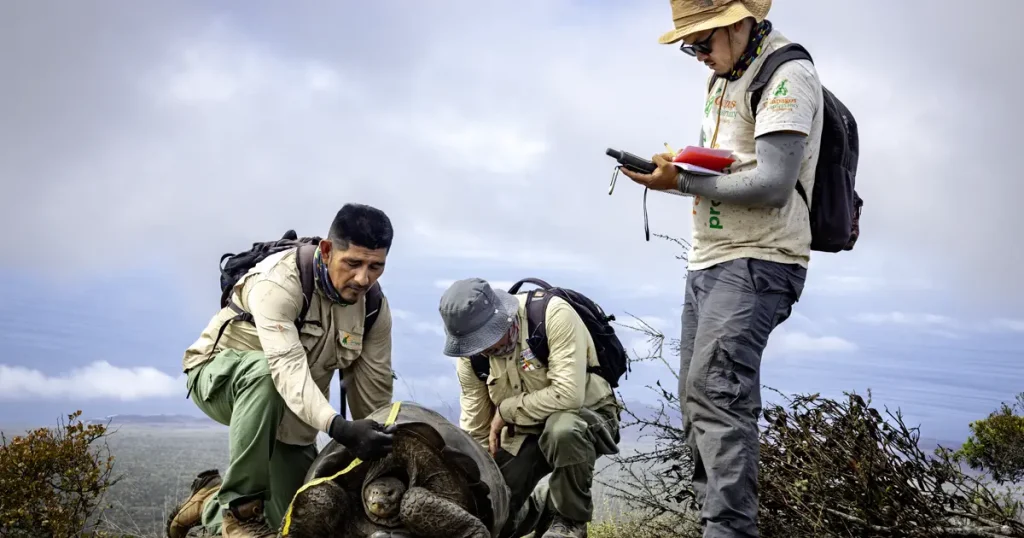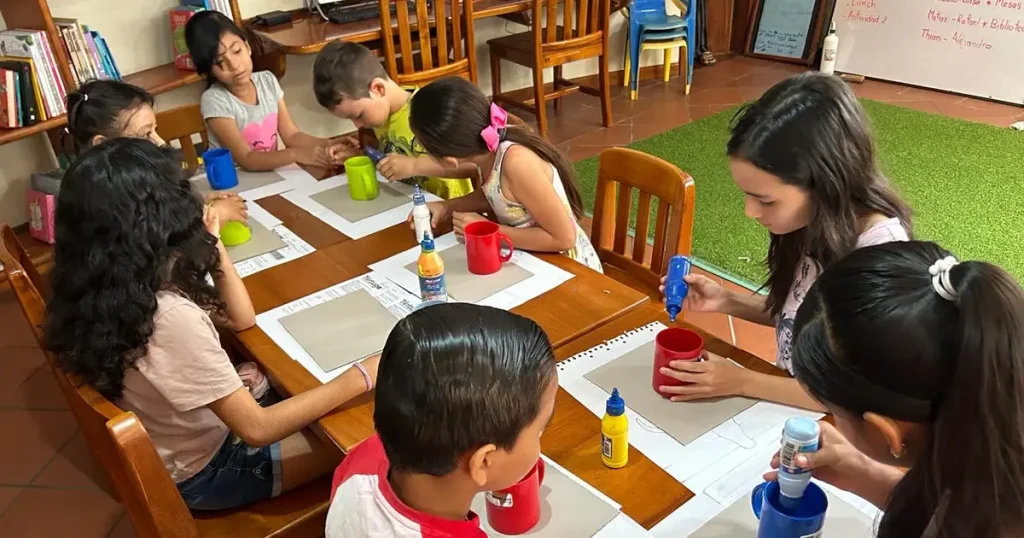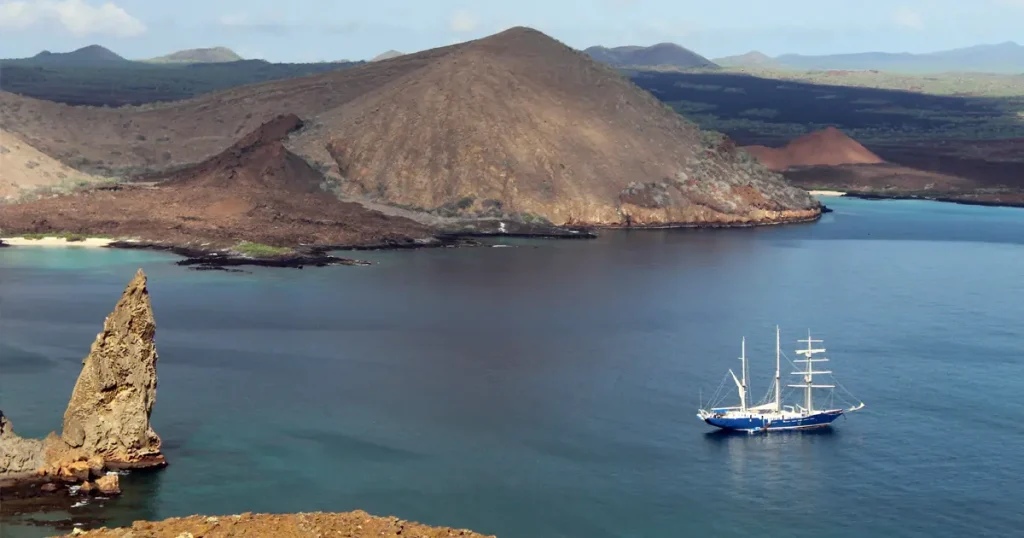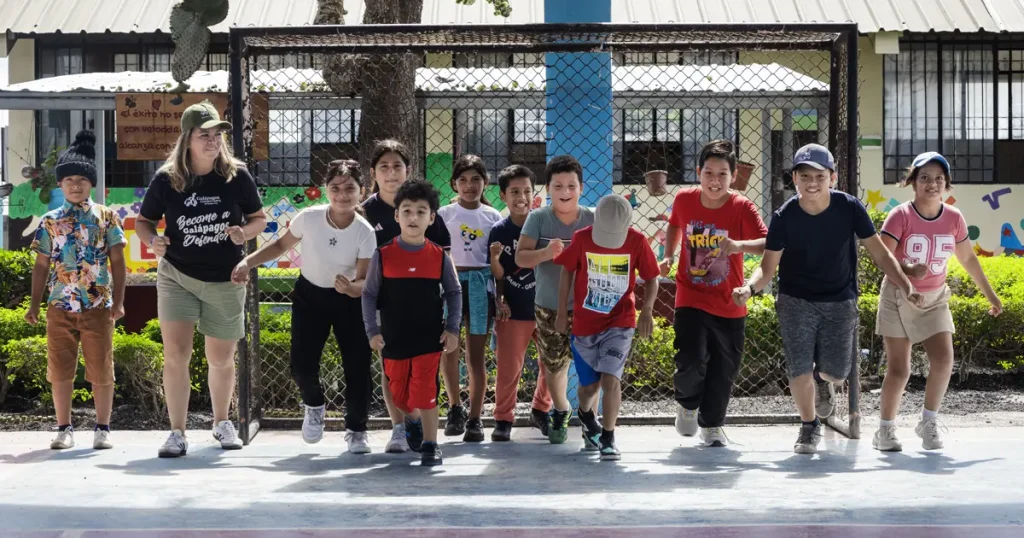Science with a Galápagos Accent

For the first time, a fully local team of five young Galapagueños presented their own research at the First Ecuadorian Congress of Herpetology, marking a new era for island-led conservation.
Cristian Gil, Walter Chimborazo, Adrián Cueva, Janaí Yépez, and Roberto Jiménez grew up surrounded by giant tortoises, mangroves, and iguanas. Their connection to nature didn’t come from textbooks but from direct experience. From an early age, they shared of powerful dream: to study and protect the unique environment that shaped them. However, in Galápagos, aspiring to become a scientist has often meant facing the painful choice of leaving home.
“Doing science in Galápagos is a distant goal when you’re born far from the country’s academic centers and lack access to universities, mentors, and professional opportunities,” says Cristian Gil, who left to study in Argentina but had to return when the pandemic cut his journey short.
Migrating is a tough decision and often financially unviable for many families. Without support, many young people are forced to let go of their dreams. And with them, science loses an irreplaceable perspective: that of those who know and love this place from childhood.
When Local Talent Finds Opportunity
These five young scientists not only share a deep connection to Galápagos’ natural environment. They also share a story that is breaking paradigms. They are the first scientific team made up entirely of Galapagueños within Galápagos Conservancy.
Their training has been hands-on from the beginning. They have participated in scientific expeditions, learned to analyze the data they collect, and have received direct mentorship from leading figures like Dr. James Gibbs and Dr. Jorge Carrión. Galápagos Conservancy also provides a supportive work environment and financial incentives that allow them to pursue academic goals without leaving the islands.
Janaí Yépez, for example, is studying Environmental Technology remotely while working in the field. “It’s challenging, but also an advantage,” he says. “Each class makes sense because I connect it to what I observe. I feel like I’m learning in order to care for what I love.”

Today, the team has deepened their knowledge of Galápagos’ unique ecosystems and is focused on species requiring urgent action, such as giant tortoises and the yellow and pink land iguanas. Their work, consistent and rigorous, is now being recognized beyond the archipelago.
The growth of scientific talent within Galápagos is exemplified by the journey of Roberto Jiménez. He began as a field assistant at the Charles Darwin Research Station and later spent two decades as a park ranger, directly safeguarding the islands’ biodiversity. Today, he has also become a researcher. “I spent many years protecting biodiversity in the field,” he says. “But now I’m also doing research. That gives me great satisfaction. Knowing that my contribution as a Galapagueño scientist helps protect the place where I grew up motivates me every day.”
The Debut of a New Generation of Galapagueño Scientists
During the First Ecuadorian Congress of Herpetology, held in the city of Loja from March 27 to 29, 2025, the five Galapagueño scientists presented their research to experts from across the country. One of the symposia, co-organized by Galápagos Conservancy, focused on reptiles of the archipelago. There, the team detailed findings on the ecology of the pink iguana, the diet of tortoises and land iguanas, the plan for reintroducing giant tortoises to Floreana, the ecological restoration of Santa Fe, and progress in recovering tortoise populations throughout the islands.
For them, it wasn’t just a presentation. It was their debut as leading voices in Ecuador’s scientific community. “I felt incredibly motivated,” says Adrián Cueva. “It was my first time presenting at an event like this, and I felt proud to represent my team and the islands.”
For Adrián, who also recently completed his degree as an Environmental Protection Technologist, the experience validated not only his work, but the real possibility of building high-quality science rooted in Galápagos expertise and a deep commitment to the territory.
Without the strengthening of local talent, science in Galápagos will continue to rely on external experts, often disconnected from the islands’ reality. The knowledge that comes from daily contact with the environment will be lost, and the essential link between conservation and community will weaken.
Thanks to the support of Galápagos Conservancy, a new generation of scientific leaders is emerging. They are producing high-quality science with roots in the land where they were born. They prove that knowledge doesn’t always come from the outside. It can also be built from within, with love, commitment, and a strong sense of belonging.
By supporting these young scientists, we are actively investing in the future of Galápagos itself.

Share:



